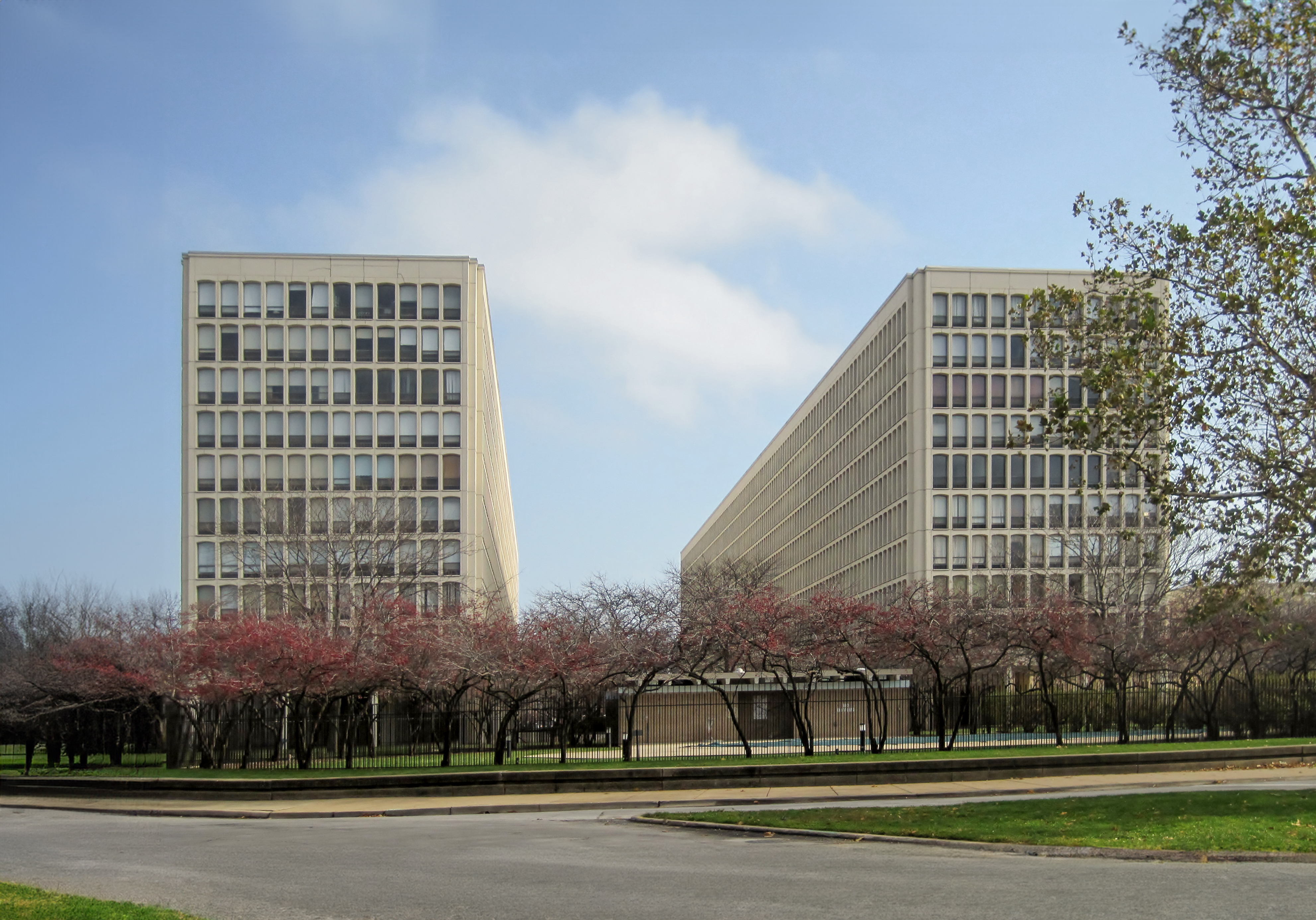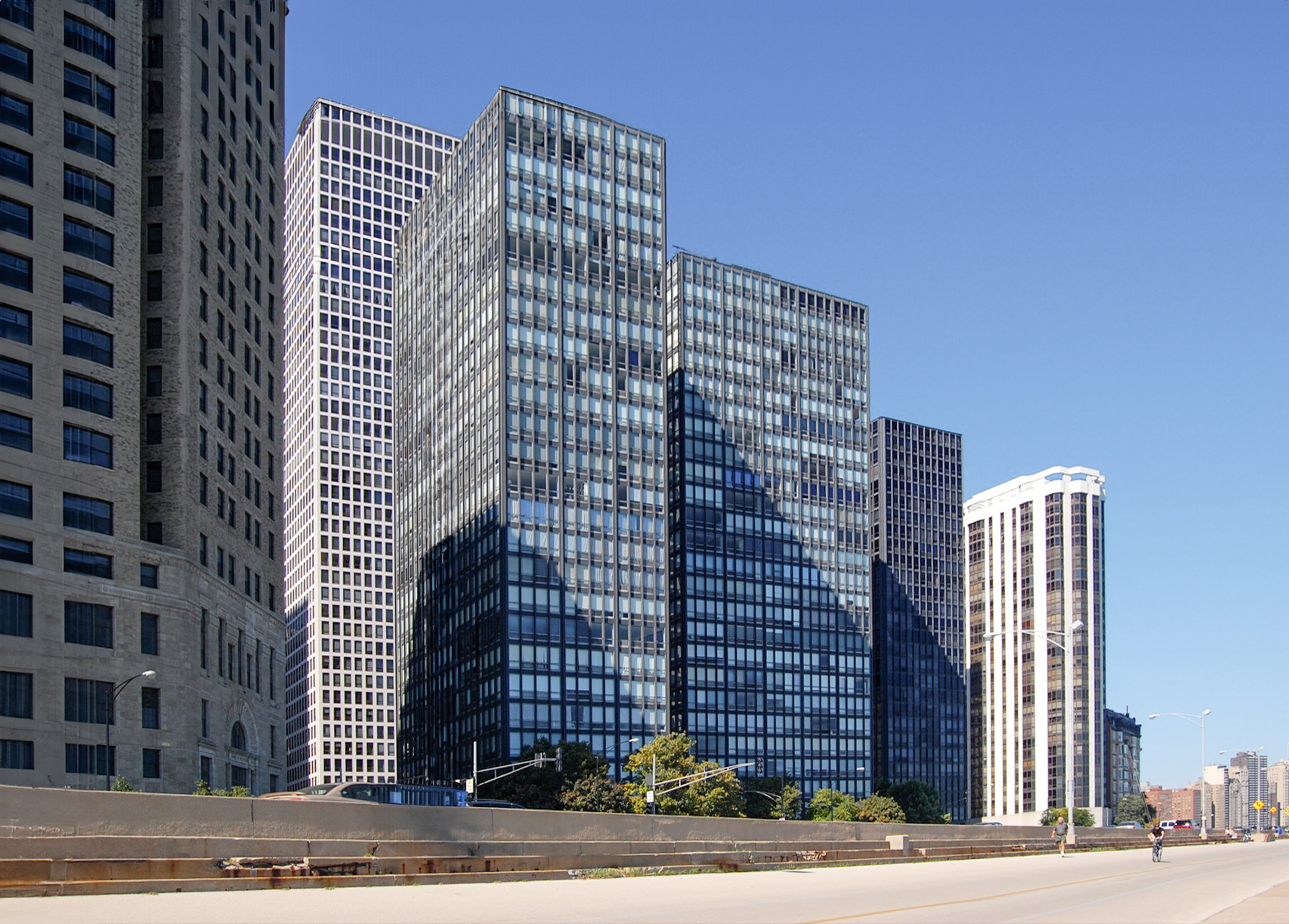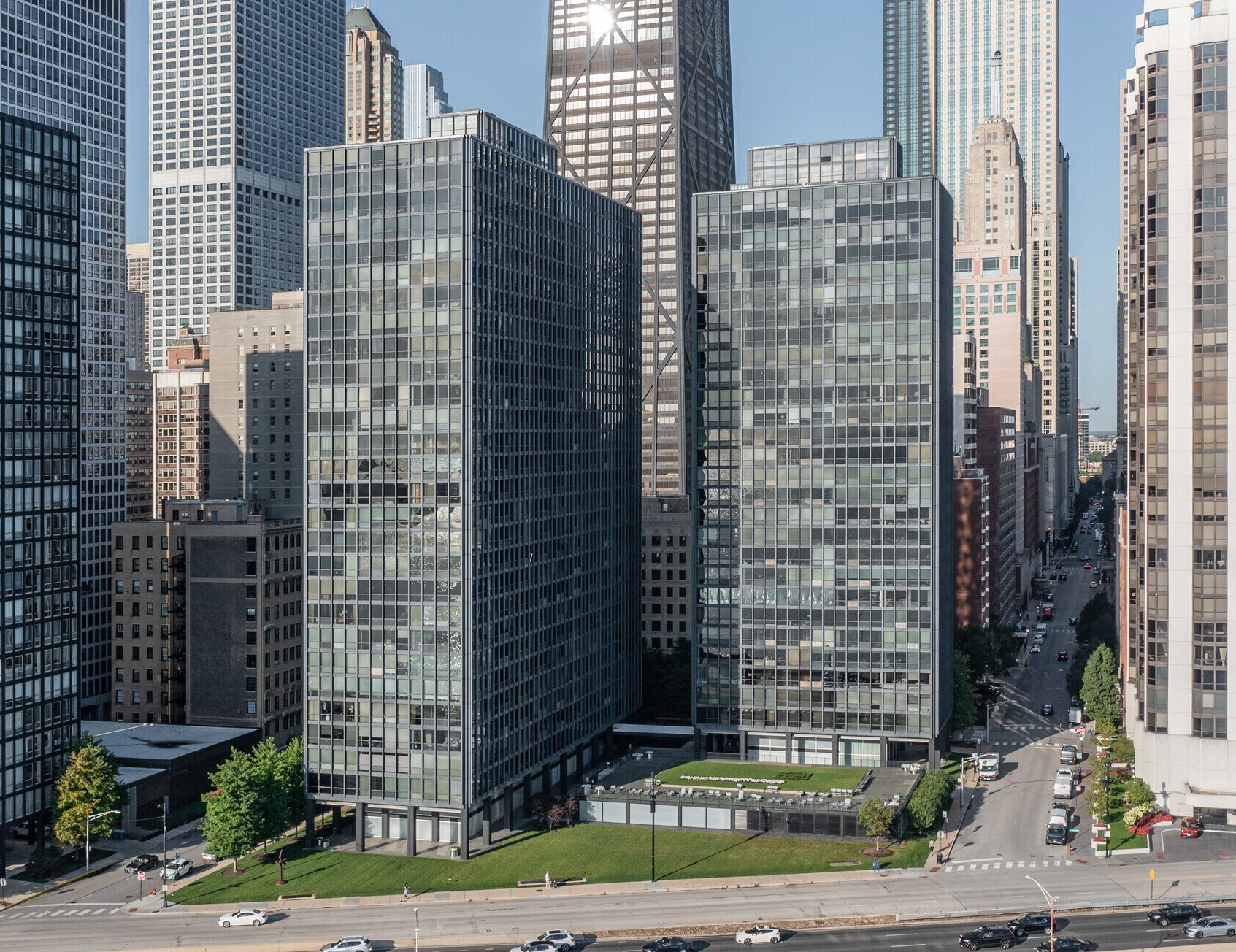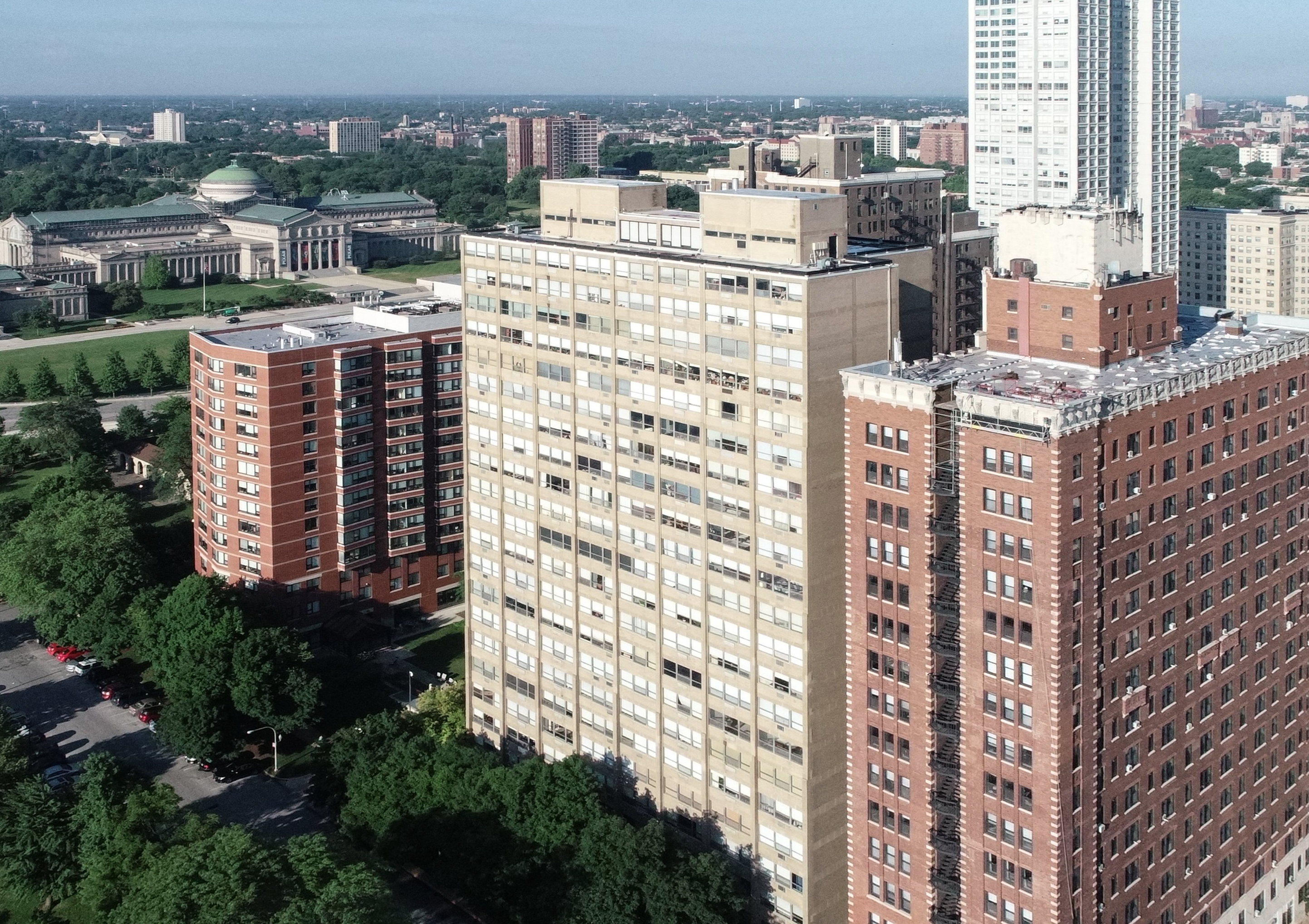The University Apartments is an International Style skyscraper designed by I. M. Pei, with Araldo Cossutta as lead architect, and built between 1959 and 1961 in Chicago, IL.
University Apartments is not the only name you might know this building by though. It is common for companies to want to attach their names to iconic buildings when they move in, or for the general public to come up with nicknames, and this one is no exception. The University Apartments is also known, or has been known as, University Park Condominiums, or University Gardens Apartments.
Its precise street address is 1400-1451 E.55th Street, Chicago, IL. You can also find it on the map here.
The University Apartments is a structure of significant importance both for the city of Chicago and the United States as a nation. The building embodies the distinctive characteristic features of the time in which it was built and the International Style style. Because of that, the University Apartments was officially included in the National Register of Historic Places on December 22nd 2005.
The two buildings are identical in their structure and layout. Their design was influenced by Le Corbusier's architecture, it rises on large rectangular concrete pillars, housing a lobby and outdoor communal spaces on the ground floor. Above this base there are 9 floors, with 270 residences in each building. Both buildings are separated by a garden courtyard.





